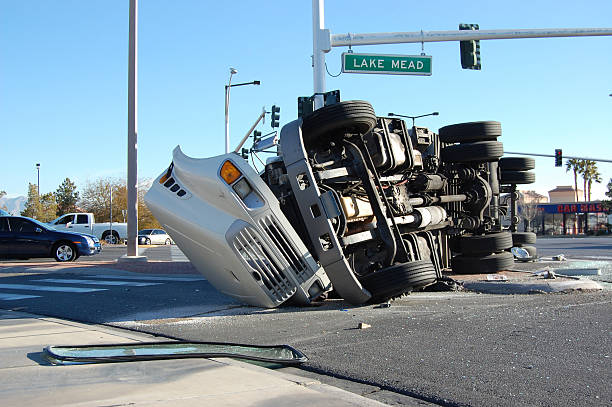The Anatomy of an 18-Wheeler Truck Accident: Understanding Causes and Contributing Factors
Overview
The roaring of the 18-wheelers on our highways is an example of how the modern world is interconnected, ensuring that the movement of goods takes place over long distances and global trade continues.
While the trucks do play a major role in the supply chain, they also pose a significant safety risk when on the road.
When an 18-wheeler truck is involved in an accident, the effects may be so devastating that many people can suffer severe injuries, lose lives, and cause huge property damage. In such cases, the people affected by the accident should consult a reputable 18-wheeler accident lawyer in San Antonio.
To understand the complexity of such incidents, we need to go through and examine the anatomy of 18-wheeler truck accidents, which will reveal the multifaceted causes and various factors that contribute to their occurrence.
However, only a holistic comprehension of these dynamics is able to give us hope that we can eventually implement successful measures to avoid such tragedies and make the roads safer for all road users.
18-Wheeler Accidents and Their Causes
Driver Error:
The most common cause of 18-wheeler accidents is likely to be driver mistakes.
This involves different types of driving behaviors, including speeding, reckless driving, distracted driving (e.g., texting or eating while driving), and disobeying traffic laws or keeping a safe distance.
Despite the strict training rules in the business of commercial trucking, human mistakes still happen and result in serious consequences on the road.
Fatigue:
Long hours of driving can cause driver fatigue, which in turn affects the ability to make decisions, respond in time, and be generally cognitively oriented.
The truck drivers usually have very harsh schedules and very short deadlines, which, in turn, may result in fatigue-related crashes.
Mechanical Failures:
The next major reason for the 18-wheeler crash is mechanical failure. They may range from braking failure, blowout of the tire, steering system problems, and engine problems. No matter the problem that caused the accident, if you want to get compensation for your damages, then you should contact Mokaram Law Firm.
Poor Weather Conditions:
Transportation by road is problematic due to adverse weather in the form of heavy rains, snow, ice, fog, or high winds, which create serious hindrances for truck drivers.
Reduced visibility, a slippery surface, and less traction are the main factors contributing to the possibility of accidents, especially at high speeds.
Pressure to Meet Deadlines:
In a logistic world, where time is money and delivery deadlines are usually very tight, truck drivers have to put forth a lot of effort to meet the deadlines.
Whether as an employee who carries out the tight schedules set by the employer or a client who demands the goods to be transported within a stipulated time, the pressure to travel within the timeframe can lead to risky behaviors on the road.
The drivers may want to go beyond the speed limits, and they may not be able to take the mandatory rest breaks or do necessary maintenance on time to stay on schedule.
Poor Weather Conditions:
Extreme weather conditions constitute a significant risk factor to truck drivers when it comes to the already hazardous situation of driving these large and heavy vehicles.
Rain, snow, fog, ice, and high winds may all jeopardize visibility, traction, and vehicle control, which can, in turn, make it very hard for drivers to steer safely.
During adverse weather conditions, stopping distances increase, maneuverability
decreases, and the risk of slipping or hydroplaning goes up, thus increasing the frequency of accidents.
Improper Loading of Cargo:
Proper loading and the correct securing of the freight play a key role in the stability and balance of 18-wheeler trucks on the road.
Nevertheless, incidents of cargo that are not loaded or secured properly do happen and can be very dangerous.
The cargo that is poorly distributed, overloaded, or not adequately restrained can move during transportation and change the center of gravity of the vehicle, which in turn increases the risk of rollover or loss of control.
Rules and Regulations For the Trucking Industry
Regulatory Compliance
Trucking companies are subject to multiple regulations regarding driver qualifications, hours of service, safe vehicle operation, cargo securement, and environmental issues. Violation of the regulations may result in fines or the suspension of the license.
Driver Qualifications
Commercial truck drivers must go through the process of meeting certain requirements, obtaining a CDL, taking medical examinations, and finishing the education and training program. Employers are responsible for verifying applicant’s credentials and offering continuous training.
Hours of Service (HOS)
Regulations are also designed to limit consecutive driving hours to prevent driver fatigue-induced accidents by setting maximum driving times and requiring rest breaks.




Post Comment